GTM Strategy Template Guide: Your 2025 Success Blueprint


In 2025, launching a B2B SaaS product without a robust GTM strategy template often leads to missed opportunities and wasted resources. The stakes are higher than ever as competition intensifies and market conditions shift rapidly.
This guide provides a proven gtm strategy template designed for enterprise software and SaaS leaders committed to scalable, repeatable growth. You will discover how to align product, marketing, and sales into a single growth engine, leverage AI and Agentic Automation for efficiency, and set measurable goals for pipeline and ARR.
Ready to build a launch plan that delivers real results? Dive in and turn strategy into action.
The Fundamentals of a GTM Strategy in 2025
A gtm strategy template is the cornerstone of successful B2B SaaS launches in 2025. It goes beyond a simple marketing plan, outlining a step-by-step approach that unites product, sales, and marketing into one growth engine. This alignment drives faster time-to-revenue, maximizes ARR, and helps companies achieve product-market fit in new markets or segments.
Modern GTM strategy templates are used for:
- New product launches
- Market expansion into regions like the US
- Repositioning solutions for evolving buyer needs
- Relaunches to capture missed opportunities
Cross-functional alignment is now essential. Product, marketing, and sales teams operate as a single unit, sharing goals and metrics. For example, a SaaS startup entering the US with a vertical-specific solution will need coordinated messaging, sales enablement, and demand generation from day one.
Data from Zendesk shows companies with a clear GTM strategy reduce launch chaos and improve their odds of success. The rise of Agentic AI and automation is reshaping GTM execution, enabling automated lead qualification, campaign management, and predictive analytics. These tools set SaaS leaders apart in a crowded landscape.
For practical frameworks and actionable steps, explore Go-to-market templates and frameworks to build a GTM strategy template tailored to your business.
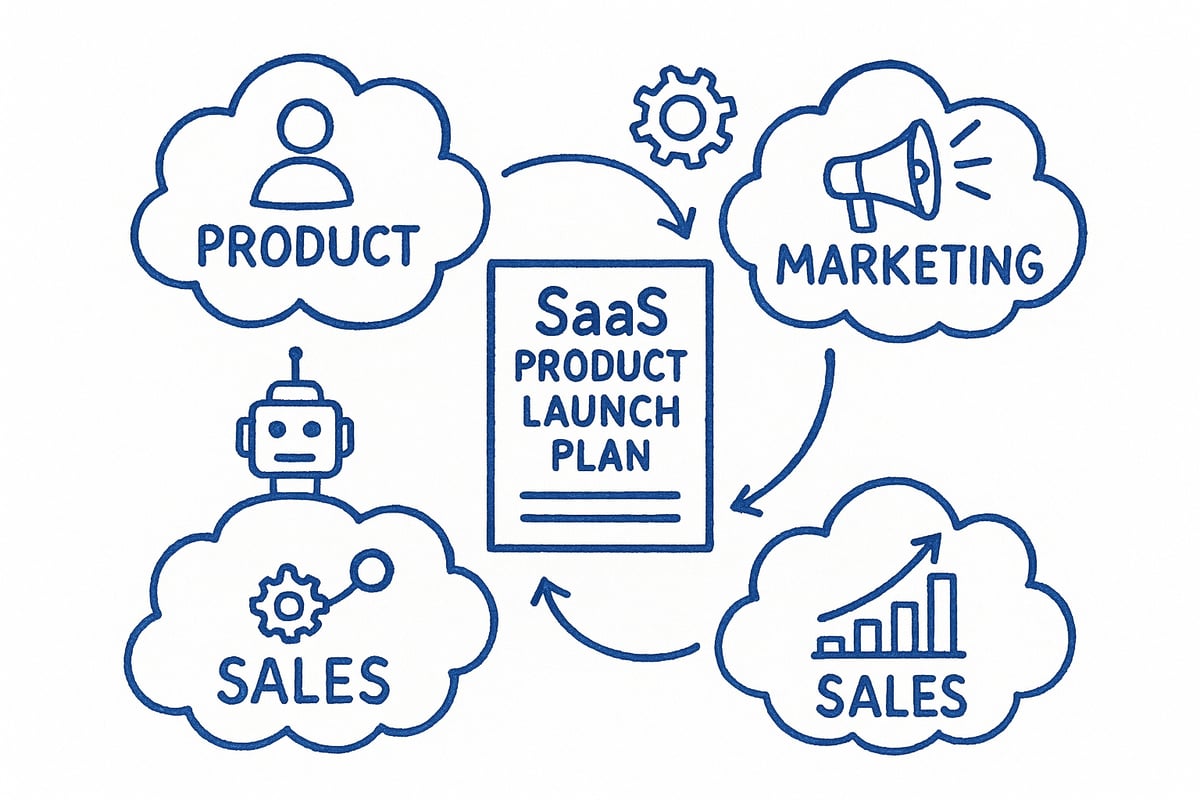
Essential Components of a Winning GTM Strategy Template
A winning gtm strategy template starts by uniting product, marketing, and sales around a shared understanding of your audience, value, and goals. Each element builds the foundation for predictable, scalable growth and measurable outcomes.

Customer and Market Analysis
The first step in any gtm strategy template is accurate customer and market analysis. Use data to define your Ideal Customer Profile (ICP) and develop buyer personas. Map customer pain points directly to your product’s value.
- Identify whitespace by analyzing competitors and market trends.
- Leverage AI tools to validate personas and uncover hidden opportunities.
- Example: A SaaS bundle for busy school administrators, identified through AI-driven sentiment analysis.
These insights ensure your launch targets the right people at the right time.
Value Proposition & Positioning
A strong gtm strategy template hinges on differentiated messaging and positioning. Craft unique selling propositions (USPs) that fill market gaps and speak to buyer needs.
- Align your value proposition to real customer problems.
- Use case studies and testimonials for credibility.
- Example: A SaaS firm highlights Agentic Automation as a key differentiator, winning trust in crowded markets.
For more in-depth guidance on strategic positioning, see SaaS GTM Strategy: The Ultimate Guide for 2025.
GTM Objectives, KPIs, and Success Metrics
Set clear objectives and success metrics for your gtm strategy template:
- Define pipeline, ARR, CAC, and retention targets.
- Assign KPIs to each phase: awareness, conversion, and expansion.
- Use operational dashboards for real-time tracking.
- Example: Launch with an ARR goal of $1M in year one.
- Integrate feedback loops to iterate and improve.
This disciplined approach drives revenue growth and ensures continuous learning.
Step-by-Step: Building Your 2025 GTM Strategy Template
Launching a successful B2B SaaS product in 2025 demands a modern gtm strategy template that unites product, marketing, and sales into a single growth engine. Follow these five steps to ensure alignment, data-driven execution, and measurable outcomes.
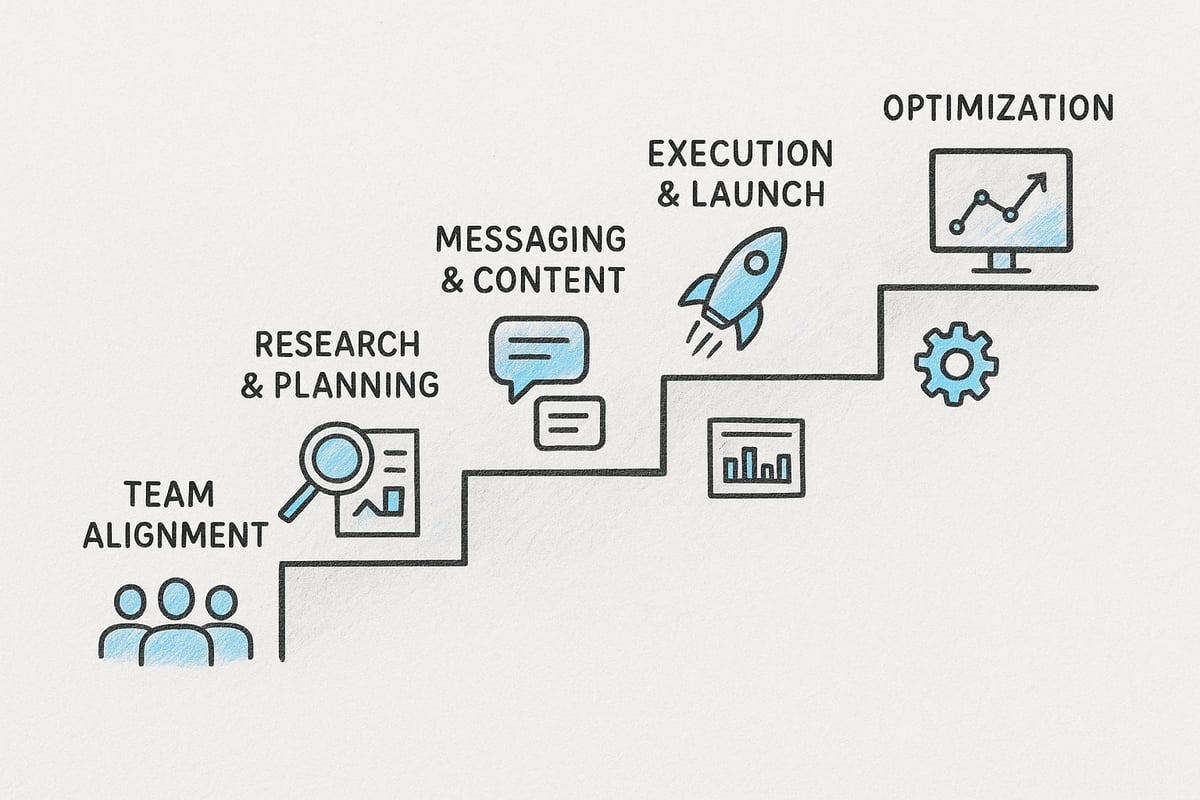
Step 1: Kickoff and Team Alignment
Start by assembling a cross-functional team, including product, marketing, sales, and customer success. Define clear roles and set a regular communication cadence, like weekly standups. Secure executive sponsorship to ensure buy-in.
Use project management tools for visibility and accountability. For example, teams leverage Asana to track progress, dependencies, and deliverables. This unified kickoff ensures every stakeholder moves in sync.
Step 2: Research and Planning
Leverage AI and ML tools to gather market, competitor, and customer insights. Map the customer journey and identify critical touchpoints. Analyze past launch data to inform your approach.
For instance, use AI-driven competitor analysis to spot feature gaps and whitespace opportunities. For a deeper dive into step-by-step approaches, see this B2B SaaS GTM Strategy for 2025 guide.
Step 3: Messaging, Enablement, and Content
Develop enablement assets such as sales playbooks, objection handling guides, and battlecards. Align messaging across all channels and buyer journey stages. Use case studies and testimonials to build trust.
Launch enablement kits for outbound sales and customer success teams. AI can validate and personalize messaging for different segments, enhancing campaign effectiveness.
Step 4: Execution and Launch
Build a phased timeline with clear milestones and dependencies. Activate integrated campaigns using outbound, ABM, and demand generation. Implement Agentic AI for automated campaign management and lead routing.
Monitor KPIs in real time and adjust tactics rapidly. For example, set up automated lead qualification and nurture sequences to accelerate pipeline creation.
Step 5: Post-Launch Optimization
Continuously analyze performance data and customer feedback. Iterate on messaging, campaigns, and enablement assets based on insights. Scale successful tactics and sunset those that underperform.
Hold quarterly retrospectives and update your gtm strategy template for future launches. Integrate feedback loops, real-time dashboards, and Agentic AI to drive ongoing improvement.
Integrating Agentic AI and Automation into Your GTM Plan
Agentic AI and Agentic Automation are transforming how companies execute their gtm strategy template. These technologies rely on autonomous agents that can independently optimize tasks such as lead generation, qualification, and follow-up, freeing teams to focus on higher-value activities.
With Agentic AI, B2B SaaS organizations see measurable gains, including faster pipeline growth, reduced manual workload, and highly personalized outreach at every stage of the customer journey.
Key use cases include:
- AI-driven ICP scoring to prioritize high-value accounts in real time
- Automated campaign management that adapts messaging and channels based on engagement data
- Predictive analytics for sales forecasting and resource allocation
- Example: A SaaS company used Agentic AI to boost its qualified pipeline by 30% within six months
To fully leverage Agentic Automation, ensure your data quality is high, maintain human oversight, and retrain AI models continuously. This approach not only improves results but also builds trust across product, marketing, and sales teams.
Early adopters of Agentic AI within their gtm strategy template gain a lasting edge, achieving greater efficiency, better alignment, and accelerated revenue growth.
GTM Consult: Expert Support for B2B SaaS GTM Execution
For B2B SaaS companies seeking expert guidance on their gtm strategy template, GTM Consult delivers hands-on execution support focused on scalable revenue and rapid ARR growth.
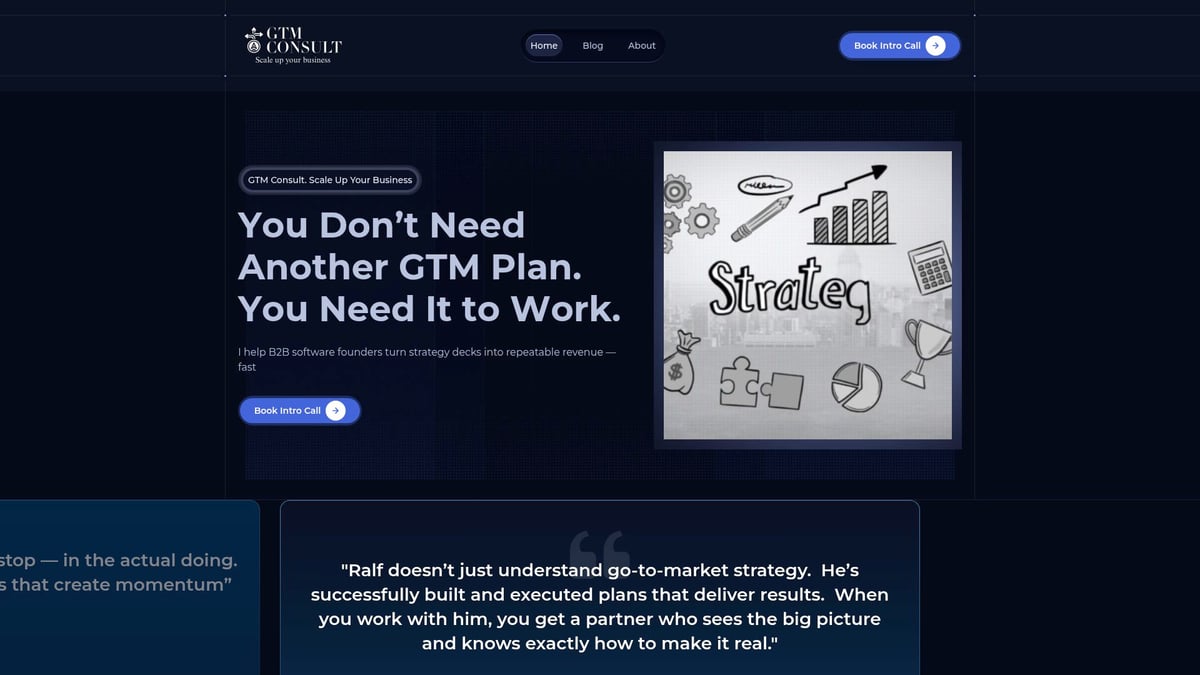
Core services include:
- Product-market fit validation
- Differentiated positioning
- Demand generation programs
- Sales enablement playbooks
What sets GTM Consult apart is their unified approach, aligning product, marketing, and sales into a single, data-driven growth engine. Their proven frameworks and operational dashboards drive measurable pipeline impact.
Discover more in their GTM strategy consulting insights.
Book a free strategy call to unlock your next stage of GTM growth.
GTM Strategy Template Best Practices & Common Pitfalls
Building a robust gtm strategy template is essential for SaaS and enterprise software teams aiming to accelerate pipeline and ARR. The right template drives alignment, repeatability, and measurable outcomes.
Best practices for a successful GTM strategy template include:
- Standardizing templates for every launch and market expansion.
- Aligning product, marketing, and sales early as a unified growth function.
- Leveraging real-time dashboards for KPI tracking and fast adjustments.
- Reusing project management templates in tools like Asana or Monday.com.
- Integrating Agentic AI for automation, ICP scoring, and campaign optimization.
- Embedding milestones and dependencies to prevent bottlenecks.
For further insights on aligning teams and frameworks, see the B2B Go-to-Market Strategy Framework 2025.
Common pitfalls to avoid:
- Siloed teams with fragmented communication.
- Unclear KPIs and inconsistent measurement.
- Neglecting post-launch iteration or feedback loops.
- Underutilizing automation and AI for efficiency.
- Failing to update the template as learnings emerge.
Explore detailed solutions to these challenges in Why GTM strategies often fail.
For example, one SaaS company missed ARR targets after sales and marketing failed to coordinate messaging and lead handoffs. Documented GTM processes and feedback loops helped them recover and scale faster.
Data shows that companies with standardized GTM processes launch 20-30 percent faster. Embrace continuous improvement, real-time dashboards, and Agentic Automation to keep your GTM strategy template ahead of the curve.
Now that you’ve explored how a unified GTM strategy can accelerate your SaaS growth, it’s clear that aligning product, marketing, and sales isn’t just a best practice—it’s a game changer for 2025. If you’re ready to move from theory to action, we’re here to help you turn these proven frameworks into measurable results like pipeline growth and ARR. Whether you’re seeking sharper positioning, streamlined enablement, or a hands-on partner for execution, let’s talk through your goals and map out your next steps together.
Book a free meeting

Latest From
The Blog
Go To Market Strategy Consulting Guide For 2025 Success

Go To Market Strategy McKinsey Guide For Success 2025

Crossing the Enterprise Chasm: A Practical Guide to Sales-Led Growth (SLG)


Let's Build The Future Together




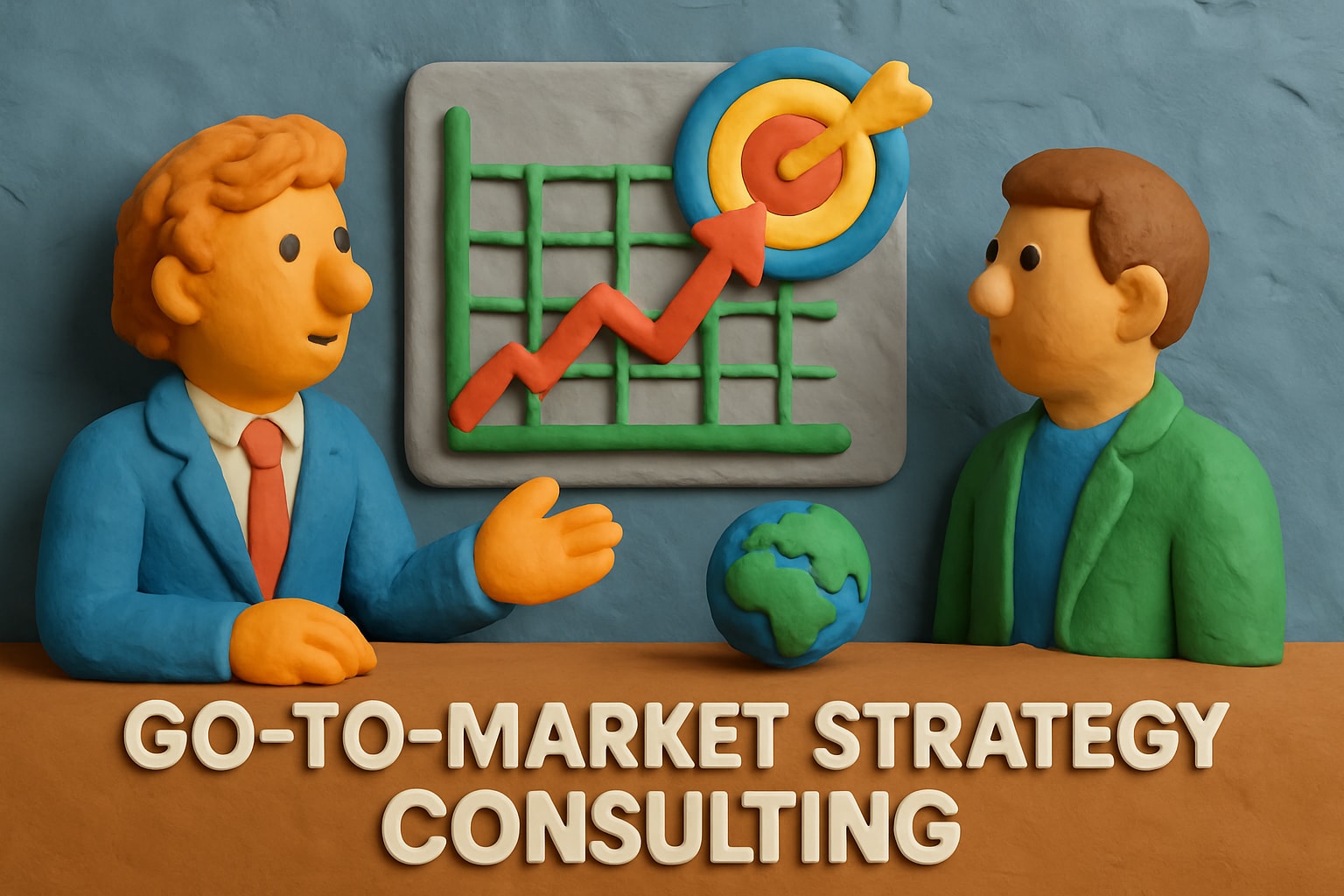
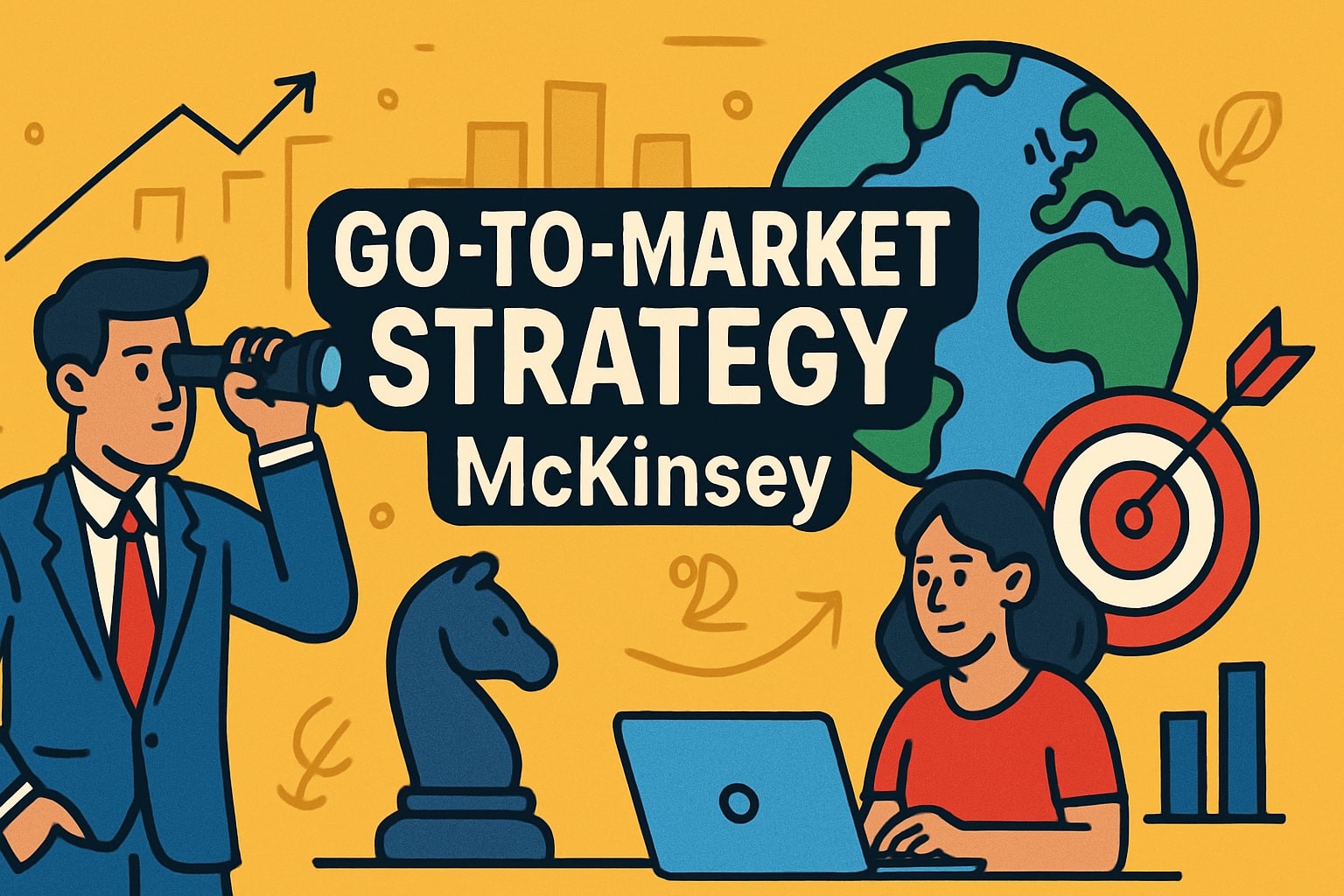
.jpg)